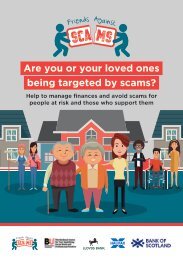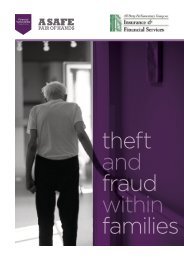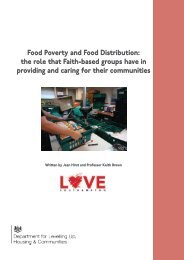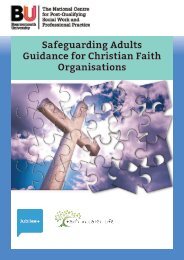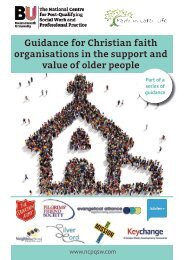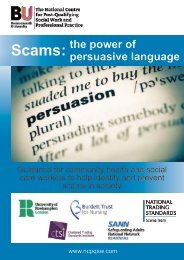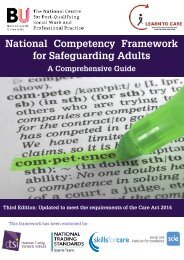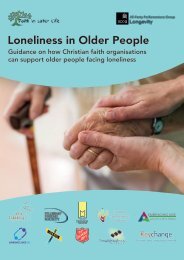0-Coercion and control report with pics FINAL
Coercion and control are used in both domestic and financial abuse. There are also differences in how agencies approach these concerns, and we seek to highlight this to learn from and utilise best practice.
Coercion and control are used in both domestic and financial abuse. There are also differences in how agencies approach these concerns, and we seek to highlight this to learn from and utilise best practice.
Create successful ePaper yourself
Turn your PDF publications into a flip-book with our unique Google optimized e-Paper software.
carers, or friends. The majority of perpetrators in Hourglass’ data from 2020 were sons<br />
<strong>and</strong>/or daughters or other family members’ (Hourglass 2020:7).<br />
As in domestic abuse, financial abuse between family members can easily be reframed as a<br />
family spat, relatives fighting over money, debt, <strong>and</strong> therefore hard to spot. It can be even<br />
harder to identify for the individual - coming as it does from someone close to them.<br />
Because this type of abuse is not from the ‘outside’ it’s often not seen as scary or<br />
damaging, whereas in reality, <strong>with</strong> abuse from inside your family or inside your home there<br />
is no escape. ‘The most common location of abuse risk (is) the person’s own home at 43.8%<br />
(Safeguarding Adults Collection (SAC) 2019-20) <strong>and</strong> most perpetrators of abuse are well<br />
known to their victim’ (Brown et al 2021:17).<br />
Victim blaming <strong>and</strong> shaming<br />
Victims of financial abuse are often blamed, drawing a further parallel <strong>with</strong> domestic abuse.<br />
The adage ‘why didn’t they leave?’ (an abusive relationship) translates to ‘why did they fall<br />
for it?’(the scam). Victims can be labelled as naïve, stupid or greedy ‘however, such labels<br />
are unhelpful <strong>and</strong> superficial generalisations that presume all of us are perfectly rational<br />
consumers, ignoring the fact that all of us are vulnerable to a persuasive approach at one<br />
time or another’ (OFT 2009:5) This links to the need to recognise that vulnerability has<br />
evolved - it is situational, <strong>and</strong> our approaches have to evolve as it changes.<br />
The language <strong>and</strong> labels we attach to abuse are important ‘words such as “scam”, “con”,<br />
“swindle”, “bamboozle” <strong>and</strong> “cheat” are sometimes used to describe fraud. The slang<br />
10




